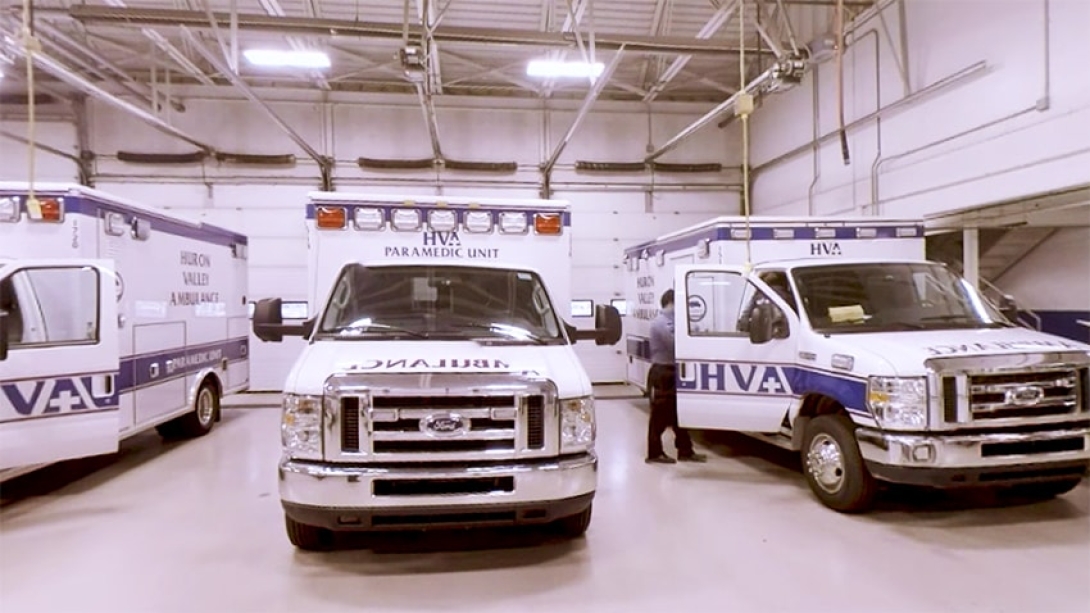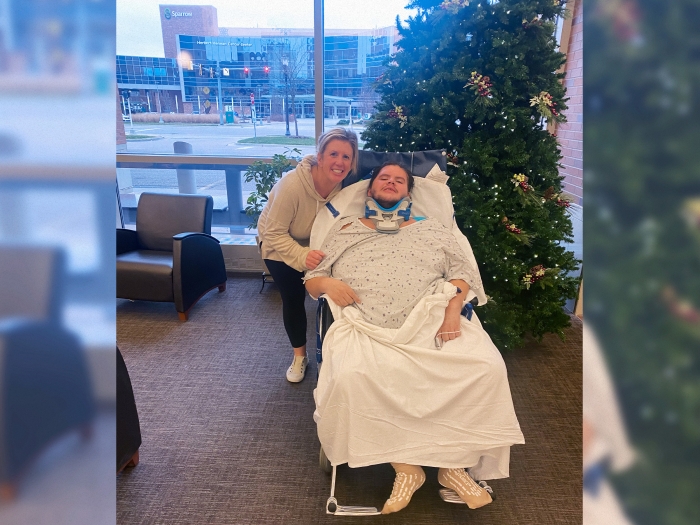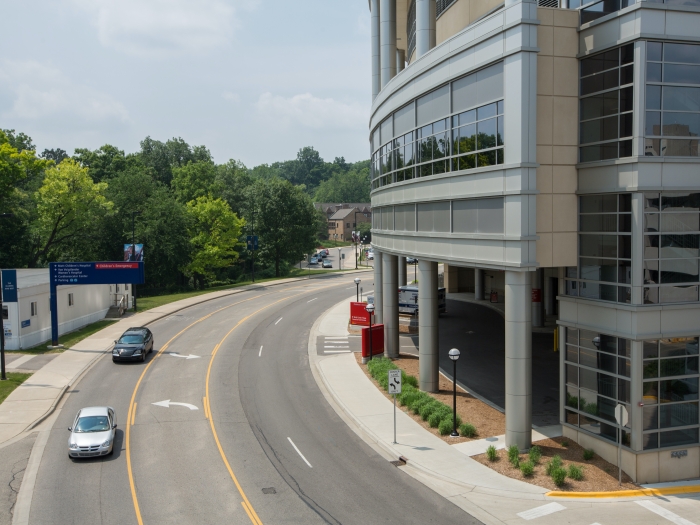A paramedic explains the ins and outs of how young patients are transported to the hospital.
7:00 AM
Author |
After starting the video, click the screen. Hold down your mouse button and move it around for a 360-degree view.
An ambulance's flashing lights and loud siren can be an exciting sight to many children — unless they're the ones in need of medical care.
MORE FROM MICHIGAN: Sign up for our weekly newsletter
In that case, the situation may be frightening for kids and parents alike.
"It's always stressful when you have to call 911," says Matthew Rose, a paramedic with Huron Valley Ambulance, a nonprofit service that offers emergency transport to Michigan Medicine hospitals.
"We try to come in and be the calming presence to the situation, letting everyone know what's going on and what we're doing."
Beyond evaluating a young patient at the site, where injury assessment or pain relief might be offered, paramedics can transport that individual via ambulance to a hospital.
That might lead some families to wonder: What goes on in an ambulance?
Says Rose: "It's basically a miniature ER on the road."
Powerful vehicles
Ambulances are equipped to provide many critical medical services during patient transport.
Those capabilities include machines that supply oxygen and monitor heart rhythm and blood pressure, among other things.
Each ambulance has two paramedics on board. One drives while the other tends to a patient.
A parent or guardian may accompany the child — and siblings typically are welcome, too. But treating a patient with a severe injury on board may require those other passengers to sit up front while professionals work.
"We try to accommodate as much as possible," Rose says.
Parents, he adds, may tell the paramedic driving the ambulance which hospital they want to care for their child. That's typically OK in basic or stable cases; the closest and most specialized facility will be chosen in the event of a critical accident or severe illness.

Safety first
Although ambulances have clearance to weave in and out of traffic and get patients to a destination quickly, they're taught to drive safely (and not too much over the speed limit).
SEE ALSO: 5 Interesting Facts About Critical Care Air Transport
"All of our paramedics go through emergency vehicle operations training," Rose says, noting that paramedics also receive extensive clinical education to do their job.
The vehicles, likewise, have special technology to avoid accidents: Paramedics receive an alert if they make too many sharp turns or hit the brakes suddenly.
A special GPS device helps paramedics find the quickest route to the patient's location. That console also provides updates from a 911 dispatcher with information about the patient — and updates the details if circumstances change before arrival.
Young patients receiving care are typically put on a stretcher, a wheeled bedlike carrier. They're secured with several seat belts across the body ("kind of like a race car driver," Rose says) that allow paramedics to work while the vehicle is moving.
Once an ambulance reaches the hospital, paramedics work to safely transfer the patient and his or her medical information to emergency department teams so the healing can continue.
"We want to leave them in a better state than when we first arrived," Rose says.

Explore a variety of healthcare news & stories by visiting the Health Lab home page for more articles.

Department of Communication at Michigan Medicine
Want top health & research news weekly? Sign up for Health Lab’s newsletters today!





